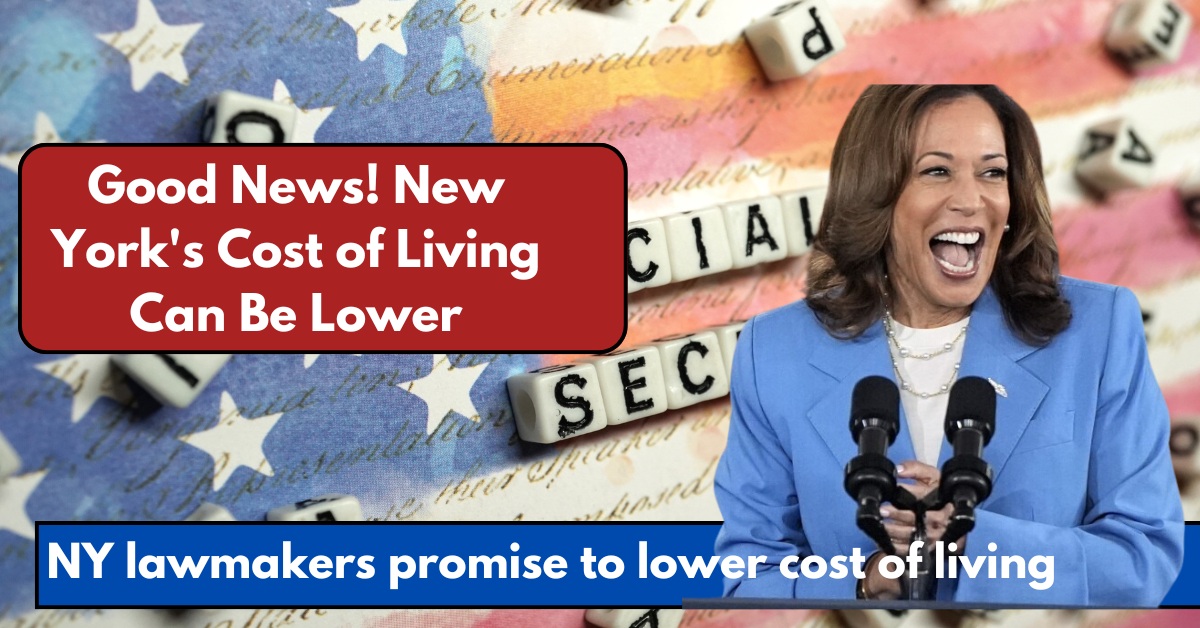As the new legislative session in New York begins, lawmakers are placing a stronger emphasis on the state’s escalating cost of living, a topic that has grown increasingly urgent in recent years. This shift highlights both growing economic concerns among voters and a renewed sense of urgency to address affordability across the state.
Growing Awareness of Affordability Issues
Democratic Senate Majority Leader Andrea Stewart-Cousins has long emphasized the importance of affordability in New York, noting the progress made through initiatives such as expanding income tax credits, capping property taxes, and broadening paid family leave. However, she acknowledged that despite these efforts, affordability remains a persistent challenge.
“We know families are still feeling the pinch,” Stewart-Cousins stated, recognizing the strain that rising living costs have placed on residents. Her remarks follow the results of the November 2024 elections, where there was a noticeable shift in voting patterns across the state. A New York Times analysis revealed that nearly every county, except one, saw a surge in support for President-elect Donald Trump, signaling growing frustration with the state’s current direction, particularly on economic issues.
The Cost of Living: A Top Concern for Voters
A Siena College poll conducted just before the 2024 elections highlighted the importance of affordability as a key issue for voters in New York. Over 80% of respondents identified the cost of living as a major concern, signaling a clear mandate for lawmakers to address the financial pressures faced by households. This shift in voter priorities has not gone unnoticed by New York’s political leaders.
As the session unfolds, it is clear that addressing affordability is no longer a partisan issue but one that resonates across party lines. Stewart-Cousins remarked that the challenges ahead will require a collective effort to make New York more affordable for its residents, regardless of political affiliation.
A Bipartisan Approach to Addressing Affordability
While affordability remains a priority for both Democrats and Republicans, the approaches differ significantly. Republican Senator Dan Stec, representing the North Country, emphasized that affordability is a nonpartisan issue that requires solutions that focus on efficiency rather than increasing state spending.
“I think my colleagues in Albany on the other side of the aisle generally want to spend more. Their idea is to tax the rich,” Stec argued, criticizing the proposal for a tax increase on high earners, which has become a contentious point in the ongoing budget discussions. Stec’s proposal instead centers on efficiency and controlling state spending, a stance that reflects his belief that tax hikes on the wealthy may not be the most effective economic policy.
Tax Policy and Its Impact on the State’s Wealthiest
New York’s tax policies have long been a point of contention. In 2021, a tax increase was passed targeting the state’s wealthiest corporations and high-income individuals, specifically those making over a million dollars. This increase is set to expire in 2027, sparking debates over whether further tax hikes on the affluent will be necessary to close the state’s budget gaps.
In 2024, the Democratic-led Senate and Assembly proposed a new tax hike aimed at individuals earning more than $5 million per year. However, Governor Kathy Hochul, also a Democrat, opposed the proposal, citing concerns over the potential negative impact on high earners’ ability to invest in the state’s economy. Despite her opposition to the personal income tax hike, Hochul remains committed to addressing the affordability crisis.
Governor Hochul’s Push for Housing Reform
One of the most pressing concerns for Governor Hochul is the state’s housing crisis. In her latest remarks, Hochul revealed plans to introduce new legislation that would make it more difficult for hedge funds and private equity firms to purchase large numbers of single-family homes. This issue has become particularly acute as large investment firms continue to buy up properties across the state, driving up home prices and reducing the availability of affordable housing for individual buyers.
“Shadowy private equity giants are buying up the housing supply in communities across New York, leaving everyday homebuyers with fewer and fewer affordable options,” Hochul said. With private equity firms owning over 500,000 homes across the country, and estimates suggesting they could control up to 40% of the single-family rental market by 2030, the issue is likely to remain a focal point for lawmakers in the coming years.
The Future of New York’s Affordability Crisis
The state’s housing crisis, combined with high mortgage rates and limited construction of affordable homes, continues to exacerbate the cost of living in New York. As private equity firms continue to expand their hold over the housing market, concerns are mounting over the long-term implications for homeownership and affordability in the state.
Experts have linked the ongoing affordability issues to a range of factors, including inflation, rising energy costs, and the scarcity of affordable housing. While state lawmakers continue to debate the best course of action, the spotlight on affordability is expected to remain in the coming months.
Conclusion
As the 2025 legislative session progresses, the cost of living remains one of the most significant issues on the agenda for New York lawmakers. With growing public concern and mounting pressure from voters, it is clear that action will be needed to ensure that the state remains affordable for residents of all income levels. Whether through tax reforms, housing policies, or efficiency-driven budgeting, lawmakers in Albany are feeling the weight of the affordability crisis and are under increasing pressure to deliver meaningful solutions.
